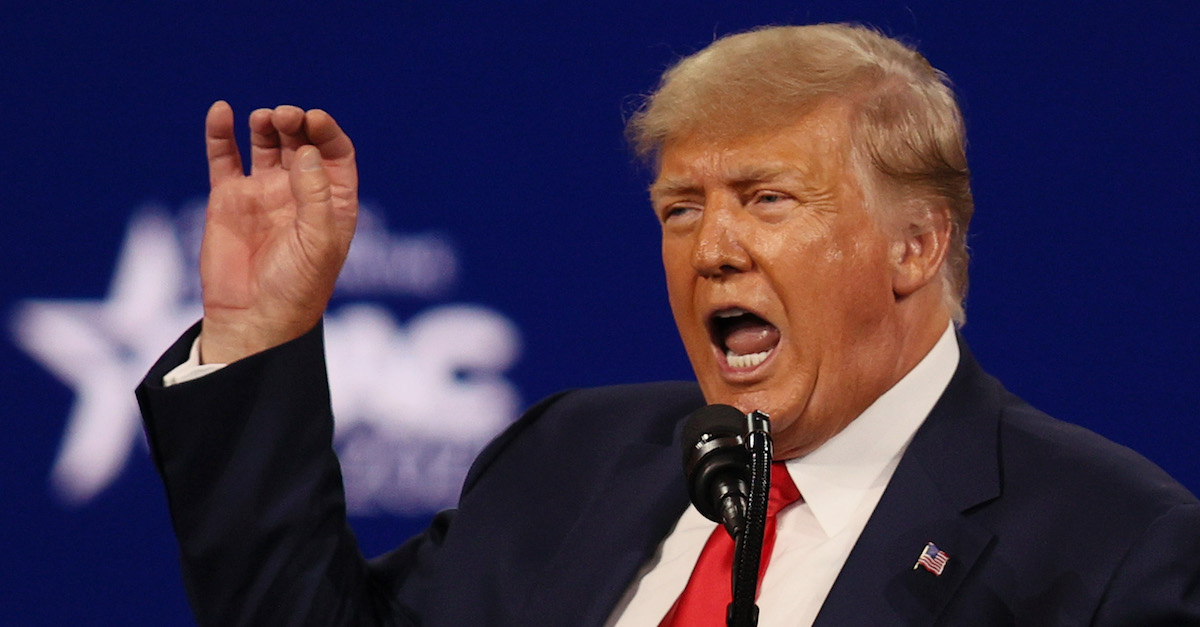

In September, White House press secretary Jen Psaki responded to a question about former President Donald Trump’s move to use executive privilege claims to stop the release of more than 770 pages of documents sought by a House select committee investigating the Capitol attack on Jan. 6. “President (Biden) has already concluded that it would not be appropriate to assert executive privilege,” Psaki said.
But under U.S. Supreme Court precedent and statutory law, who decides disagreements between a president and former president on whether past presidential records should remain confidential?
The question of whether former President Trump has a legal basis to block a “sweeping” request by the House select committee investigating the Capitol attack for his presidential documents held by the National Archives and Records Administration is now making its way through the courts.
On Nov. 9, U.S. District Court Judge Tanya S. Chutkan in Washington, D.C., cleared the way for their release. Her 39-page ruling cited the public interest and said the former president “is unlikely to succeed on the merits of his claims.” But two days later, a three-judge panel of the U.S. Court of Appeals for the D.C. Circuit issued a temporary stay of her order and set oral arguments for the appeal for Nov. 30.
Trump has challenged the House committee’s request, saying the investigation exceeds Congress’ constitutional power. He also contends a 1978 statute to warehouse and release the records of former presidents is unconstitutional because it restricts his ability as a former president to exercise his right of executive privilege.
The case could ultimately make its way to the U.S. Supreme Court, where the outcome is unclear. The high court has never addressed a situation in which a former president has invoked executive privilege when the sitting president rejects that claim. While executive privilege itself is not mentioned in the U.S. Constitution, courts have found it is rooted in the separation of powers doctrine that divides the power of the U.S. government into legislative, executive and judicial branches.
The modern doctrine for executive privilege stems from a 1974 Supreme Court decision that forced then-President Richard Nixon to turn over the Watergate tapes to Congress. Chief Justice Warren Burger, writing for the majority in a 9-0 decision, said, “Absent a claim of need to protect military, diplomatic or sensitive national security secrets, we find it difficult to accept the …[absolute] confidentiality of presidential communications.”
Nixon complied, which ultimately led to his resignation in disgrace within a few weeks. But later, as a former president, he cited historical practice and an attorney general opinion that all official documents and recordings from his time in the White House were his personal possessions when he revealed plans to destroy many of them.
Congress responded by enacting the Presidential Recordings and Materials Preservation Act of 1974, which was aimed at Nixon and placed his presidential records in federal custody to prevent their destruction. Three years later in what some call Nixon II, the U.S. Supreme Court upheld the act and ruled the separation of powers is not violated by the seizure and examination of records related to a former president that are still within the control of the executive branch. The decision also noted that President Gerald Ford signed the act, and that the Carter administration defended it.
The 7-2 majority opinion, written by Justice William Brennan, did say that executive privilege “survives the individual president’s tenure” and that “a former president may also be heard to assert” these claims. But the court placed several caveats on the privilege, saying executive privilege does not apply when there is a compelling need for the information, such as a criminal investigation.
The next year, Congress tightened control of a former president’s papers through the Presidential Records Act (PRA) of 1978. Under the PRA, the legal ownership of the official records of the president was transferred from presidents themselves to the federal government, and the law established a new statutory structure to manage records. The broad collection of covered documents includes presidential communications, internal deliberations, law enforcement materials, national security information and attorney-client information.
As outlined in a recent analysis of executive privilege in the national security blog Lawfare, sitting presidents can issue regulations under executive orders to help implement the law. In 2001, President George W. Bush issued an executive order giving a former president the ability to assert executive privilege without the consent of the sitting president. An executive order by then-President Barack Obama shifted decisions on executive privilege back to the sitting president. As president, Trump could have issued his own executive order to change or rewrite Obama’s regulations, but he left them intact.
The courts likely will have the last word on whether Trump can assert executive privilege in this situation. And because the appeals court is fast-tracking consideration of the case, it is now more likely that the U.S. Supreme Court will referee the dispute in the coming months and render what could be a landmark decision on executive privilege.
[image via Joe Raedle/Getty Images]